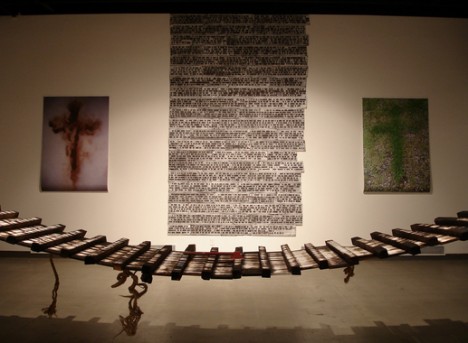 |
| Portrait of Dr. Eric Fossum, provided by The Optical Society. |
The Optical Society (OSA), has announced that Eric Fossum, PhD, inventor of CMOS sensors as we know them, has been selected as the 2020 recipient of its Edwin Land Medal.
The award, which was created in 1992 by The Optical Society (OSA) and the Society for Imaging Science and Technology (IS&T) in honor of Edwin H. Land, ‘recognizes pioneering work empowered by scientific research to create inventions, technologies and products,’ according to OSA’s press release.
To help us celebrate his achievement, Dr. Fossum, who is ‘being honored specifically for the invention and commercialization of advanced CMOS optical sensor imaging technology and the Quanta Image Sensor, and for university entrepreneurial and national young inventor training activities,’ was kind enough to share a few thoughts on being selected for the prestigious accolade.
On being selected for the award, Fossum says:
‘I feel honored and grateful to the OSA for this wonderful recognition. I am especially pleased that the medal citation includes my recent research work at Dartmouth on the Quanta Image Sensor, as well as my work with students of all ages in invention and entrepreneurial thinking.’
Dr. Fossum also wanted to thank those who have helped push his creation above and beyond what it started as:
‘I want to thank the thousands of engineers around the globe that further developed CMOS image sensor technology and made it so much better than the first devices we made at JPL more than 25 years ago!’
As with so many universities around the world, Dartmouth, where Dr. Fossum serves as the Director of PhD Innovation Programs and Associate Provost for Entrepreneurship and Technology Transfer, is partaking in remote education amidst the COVID-19 pandemic. ‘Today, in the midst of the COVID-19 outbreak, and the need to flatten the curve by working from home, I am proud that the ubiquitous CMOS image sensor is at the heart of every remote visual interaction that helps connect our communities,’ he said.
Dr. Fossum also wanted to share his excitement and gratitude for interacting with the DPReview community. Not only is he a regular in the forums, he’s also contributed to many articles over the years. To that end, he says:
‘It has been fun over the years, and informative to me, to interact with some of the techies and users on the DPR forums. They have helped shape my thoughts on what photographers need in the future, as well as inform me in digital photography science and technology that are adjacent to my expertise.’
We here at DPReview would like to both congratulate Dr. Fossum on his latest accolade and thank him for continuing to be a part of our community.
OSA and IS&T Name Eric R. Fossum the 2020 Edwin H. Land Medal Recipient
The Optical Society and Society for Imaging Science and Technology honor solid-state image sensor device physicist
WASHINGTON — The Optical Society (OSA) and the Society for Imaging Science and Technology (IS&T) are pleased to name Eric R. Fossum, Thayer School of Engineering at Dartmouth, USA, the 2020 Edwin H. Land Medal winner. Fossum is recognized for the invention and commercialization of advanced CMOS optical sensor imaging technology and the Quanta Image Sensor, and for university entrepreneurial and national young inventor training activities.
“As the inventor of the CMOS image sensor as well as an entrepreneur and educator, Eric Fossum truly deserves recognition as this year’s Edwin Land Medalist,” said 2020 OSA President Stephen D. Fantone, founder and president of Optikos Corporation. “CMOS image sensors are now found in nearly all camera phones and other electronic imaging devices—making it an enabling ground-breaking contribution to digital imaging technology.”
Eric R. Fossum is a solid-state image sensor device physicist and engineer. After working at the NASA Jet Propulsion Laboratory (JPL) at Caltech, USA, he co-founded several startups and served as CEO. He is currently the Krehbiel Professor for Emerging Technologies at the Thayer School of Engineering at Dartmouth. He has published over 300 technical papers and holds over 170 US patents. He is an OSA and IEEE Fellow, NAE member, NIHF inductee and Queen Elizabeth Prize Laureate.
Fossum invented the CMOS active pixel image sensor with intra-pixel charge transfer while at JPL, the basis for all modern CMOS image sensors. He further developed and commercialized the technology with colleagues at their startup, Photobit. He later invented the photon-counting Quanta Image Sensor. At Dartmouth, he developed the QIS technology with his students and co-founded Gigajot. He works with students and faculty to foster innovation and entrepreneurial thinking at Dartmouth and with the NIHF Camp Invention program.
Established in 1992, the Edwin H. Land Medal recognizes pioneering work empowered by scientific research to create inventions, technologies and products. It honors Edwin H. Land for his unique career as scientist, technologist, industrialist, humanist and public servant. The medal is jointly presented by OSA and IS&T, and funded through the support of the Polaroid Foundation, the Polaroid Retirees Association and individual contributors, including Manfred Heiting, Theodore Voss and John J. McCann.
About The Optical Society
Founded in 1916, The Optical Society (OSA) is the leading professional organization for scientists, engineers, students and entrepreneurs who fuel discoveries, shape real-life applications and accelerate achievements in the science of light. Through world-renowned publications, meetings and membership initiatives, OSA provides quality research, inspired interactions and dedicated resources for its extensive global network of optics and photonics experts. For more information, visit osa.org.
About The Society for Imaging Science and Technology
IS&T is an international professional non-profit dedicated to keeping members and other imaging professionals apprised of the latest developments in the field through conferences, educational programs, publications, and its website. IS&T programs encompass all aspects of the imaging workflow, which moves from capture (sensors, cameras) through image processing (image quality, color, and materialization) to hard and soft copy output (printing, displays, image permanence), and includes aspects related to human vision, such as image quality and color. The Society also focuses on a wide range of image-related applications, including security, virtual reality, machine vision, and data analysis. For more information, visit imaging.org.
About The Optical Society
Founded in 1916, The Optical Society (OSA) is the leading professional organization for scientists, engineers, students and business leaders who fuel discoveries, shape real-life applications and accelerate achievements in the science of light. Through world-renowned publications, meetings and membership initiatives, OSA provides quality research, inspired interactions and dedicated resources for its extensive global network of optics and photonics experts. For more information, visit osa.org.
Articles: Digital Photography Review (dpreview.com)

































































You must be logged in to post a comment.